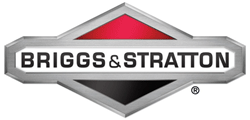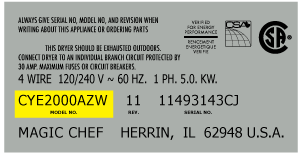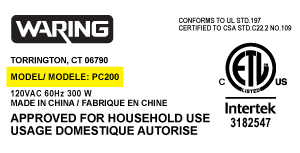MVW4505MW2 Maytag Washer - Instructions
Keep searches simple. Use keywords, e.g. "leaking", "pump", "broken" or "fit".
Noise, grinding sounds. Wash tub stopped turning but motor and cycles kept functioning. Process of elimination, must be the clutch assembly.
Easy, just followed the repair video. Recommend also ordering the drive belt. Bought one locally during my repair.
Parts Used:
-
David from BLOOMINGTON, IN
-
Difficulty Level:Easy
-
Total Repair Time:30 - 60 mins
-
Tools:Screw drivers, Socket set
58 of 80 people
found this instruction helpful.
Was this instruction helpful to you?
Thank you for voting!
Scratches in Surface
This product comes in a bottle with a brush like Liquid Paper. It goes on incredibly easy. A second coat might be needed. I wanted to prevent rust from setting in so I covered the scratches and dings. The paint is a little brighter since my washer is 10 years old but it still looks great.
Parts Used:
-
Michelle from Richardson, TX
-
Difficulty Level:Really Easy
-
Total Repair Time:Less than 15 mins
75 of 181 people
found this instruction helpful.
Was this instruction helpful to you?
Thank you for voting!
Washer wobble during spin cycle.
Watched a video to get a general idea. Moved washer to garage. Raised lid, supported with s-hook and light chain. Front springs were easy, except no hole for the rod to hang in so used chain and small screwdriver through mounting hole. Back springs were not as easy. Finally removed the back panel to get to the rods. Bingo, much easier and only took 5 min to remove the back panel. reassemble and she works like a charm. Suggest to find a video reflecting your particular brand and model as all are similar but uniquely different. Easy project though.
Parts Used:
-
Jesusa from JEFFERSON CTY, MO
-
Difficulty Level:Easy
-
Total Repair Time:1- 2 hours
-
Tools:Nutdriver, Screw drivers
21 of 23 people
found this instruction helpful.
Was this instruction helpful to you?
Thank you for voting!
Replacing shock absorbers on Maytag washer
Used video provided,but while reinstalling shocks pull the shock absorbers thru holes in washer deck using a stiff wire or a metal coat hanger will also work. This made installation so much easier!
Parts Used:
-
William from JAX BCH, FL
-
Difficulty Level:Really Easy
-
Total Repair Time:30 - 60 mins
-
Tools:Nutdriver, Screw drivers
17 of 18 people
found this instruction helpful.
Was this instruction helpful to you?
Thank you for voting!
Machine would stop at spin cycle
After disconnecting water lines and power, tip machine onto its back. The actuator is located under the drum. Remove the cover over the motor/ drive belt. Actuator is located by the transmission and held on by several screws. Unplug the wiring harness and remove three screws with Phillips screwdriver. Install new actuator..
Parts Used:
-
Steven from COHOES, NY
-
Difficulty Level:Easy
-
Total Repair Time:15 - 30 mins
-
Tools:Nutdriver, Screw drivers
13 of 15 people
found this instruction helpful.
Was this instruction helpful to you?
Thank you for voting!
Making loud noises.
The video you sent me was very helpful told me the exact tools I needed and how to do it.
Thank you
Thank you
Parts Used:
-
Roy from BROOKLYN, NY
-
Difficulty Level:Really Easy
-
Total Repair Time:30 - 60 mins
-
Tools:Nutdriver, Pliers, Screw drivers, Socket set
15 of 21 people
found this instruction helpful.
Was this instruction helpful to you?
Thank you for voting!
Clicking Noise When Agitating
- Shut off power to the washer
- Removed cap on top of agitator
- First, I tried using a ratchet set to remove the bolt that is inside the agitator at the baseplate. Tub would spin when I tried this method, so I used an air impact with long extensions. One press of the impact and the bolt loosened.
- Tied a pair of shoelaces together and stuffed them inside the seam around the agitator baseplate. I put the shoelaces half way around the baseplate. Get it in the seam then with two hands, each with an end of the shoelace, pull up on the baseplate. Success!!
- Installed the new agitator with base plate and then used the ratchet set to tighten the bolt. Didn’t want to take a chance on stripping the bolt inside the agitator with the air impact when tightening.
- Removed cap on top of agitator
- First, I tried using a ratchet set to remove the bolt that is inside the agitator at the baseplate. Tub would spin when I tried this method, so I used an air impact with long extensions. One press of the impact and the bolt loosened.
- Tied a pair of shoelaces together and stuffed them inside the seam around the agitator baseplate. I put the shoelaces half way around the baseplate. Get it in the seam then with two hands, each with an end of the shoelace, pull up on the baseplate. Success!!
- Installed the new agitator with base plate and then used the ratchet set to tighten the bolt. Didn’t want to take a chance on stripping the bolt inside the agitator with the air impact when tightening.
Parts Used:
-
Chad from SAINT AMANT, LA
-
Difficulty Level:Easy
-
Total Repair Time:30 - 60 mins
-
Tools:Socket set
12 of 14 people
found this instruction helpful.
Was this instruction helpful to you?
Thank you for voting!
On spin cycle the washer would bounce all over the was room
-
Brian from CONROE, TX
-
Difficulty Level:Really Easy
-
Total Repair Time:30 - 60 mins
-
Tools:Nutdriver, Pliers
10 of 11 people
found this instruction helpful.
Was this instruction helpful to you?
Thank you for voting!
Worn out splines connecting transmission driveshaft to agitator.
DIY'er working on a Maytag Centennial type washing machine should be aware that replacing a a transmission or agitator due to worn out splines is only half a job done well. I originally replaced my transmission due to worn splines, only to discover later that the worn agitator splines caused the new transmission splines to wear out at an accelerated rate. Transmission and Agitator should be replaced together, along with a new Agitator mounting bolt. There are plenty of video's online of how to do this repair so I won't get into that here. Just wanted to drop the above sage advice. Transmissions for these washers aren't cheap.
Parts Used:
-
Thomas from MILLBURY, OH
-
Difficulty Level:Easy
-
Total Repair Time:30 - 60 mins
-
Tools:Nutdriver, Pliers, Screw drivers, Socket set
9 of 10 people
found this instruction helpful.
Was this instruction helpful to you?
Thank you for voting!
Screeching noise when starting the washing cycle. Especially with heavy loads.
The belt in this model is underneath the washing machine. Disconnect water lines and power cords, set up the drain hose in a bucket to avoid water spilling on the floor, tip the washing machine on its back, remove two bolt screws holding the plastic covering the belt, remove the old belt, and install the new one.
Parts Used:
-
Armando from UNION CITY, CA
-
Difficulty Level:Really Easy
-
Total Repair Time:Less than 15 mins
-
Tools:Socket set
10 of 13 people
found this instruction helpful.
Was this instruction helpful to you?
Thank you for voting!
Shaking during spin cycle
Watched your videos. Knew I didn’t have the strength to do it myself. Contacted my son, he came by and using your instructions( you made me look very knowledgeable) it was done in short order!
Parts Used:
-
Karen from Merritt Island, FL
-
Difficulty Level:Easy
-
Total Repair Time:15 - 30 mins
-
Tools:Screw drivers
8 of 8 people
found this instruction helpful.
Was this instruction helpful to you?
Thank you for voting!
replaced drain hose that was missing
slipped the new drain hose on and with locking plyers slipped the wire clap in place after three trys
Parts Used:
-
Delmar from EAST TROY, WI
-
Difficulty Level:Really Easy
-
Total Repair Time:30 - 60 mins
-
Tools:Pliers
11 of 18 people
found this instruction helpful.
Was this instruction helpful to you?
Thank you for voting!
washer loud banging and shaking on spin cycle
I couldn't have done the job without the video or a helper. Replacing the first rod was a struggle but once we figured it out, the rest were easy.
Parts Used:
-
Robert from EAST HAMPTON, CT
-
Difficulty Level:A Bit Difficult
-
Total Repair Time:30 - 60 mins
-
Tools:Screw drivers
7 of 8 people
found this instruction helpful.
Was this instruction helpful to you?
Thank you for voting!
When the washer goes into a spin cycle, I would hear an intermittent loud clattering noise. I think the clutch teeth above (the cup part that is spring loaded) and the belted pulley's teeth below are not fully seating on each other during the spin cycle.
W10721967 Splutch Cam Kit
Assuming the pulley nut was properly tightened at the factory. I think this problem occurs because of ever-so-slight rounding of the splutch cam teeth from the actuator engaging and disengaging over whatever time frame there is before a clattering noise develops.
When I took off the 13mm nut using the adjustable strap tool, it felt tight to me...Was it put on as tight as it should have been at the factory? Who knows. I don't have the torque specification of this nut on that plastic pulley.
Watch the videos to remove and replace the belt cover and belt, actuator and splutch cam kit.
Pay particular attention to tightening up the nut. I put the pulley on and hand-tightened the nut. I used the adjustable strap tool and before I tightened everything, I pushed up on the pulley to press against the spring pressure in order to mesh the teeth together. After the nut was tight, I repositioned the strap tool and gave it another go, further tightening it. You see earlier that day, I only tightened it up once because I thought it was good and tight. I put everything back and within a half-hour it was clattering again and I could loosen the nut I thought was tight by hand! I fooled myself. That's why I did it twice, and don't be afraid to give it a good second tightening effort. Two weeks now and the wife is currently very happy.
Assuming the pulley nut was properly tightened at the factory. I think this problem occurs because of ever-so-slight rounding of the splutch cam teeth from the actuator engaging and disengaging over whatever time frame there is before a clattering noise develops.
When I took off the 13mm nut using the adjustable strap tool, it felt tight to me...Was it put on as tight as it should have been at the factory? Who knows. I don't have the torque specification of this nut on that plastic pulley.
Watch the videos to remove and replace the belt cover and belt, actuator and splutch cam kit.
Pay particular attention to tightening up the nut. I put the pulley on and hand-tightened the nut. I used the adjustable strap tool and before I tightened everything, I pushed up on the pulley to press against the spring pressure in order to mesh the teeth together. After the nut was tight, I repositioned the strap tool and gave it another go, further tightening it. You see earlier that day, I only tightened it up once because I thought it was good and tight. I put everything back and within a half-hour it was clattering again and I could loosen the nut I thought was tight by hand! I fooled myself. That's why I did it twice, and don't be afraid to give it a good second tightening effort. Two weeks now and the wife is currently very happy.
Parts Used:
-
TERRY from WAUKEE, IA
-
Difficulty Level:Easy
-
Total Repair Time:15 - 30 mins
-
Tools:Nutdriver, Socket set
8 of 13 people
found this instruction helpful.
Was this instruction helpful to you?
Thank you for voting!
Washer was stuck on rinse cycle
Research showed it was the transmission and the actuator . Parts were super easy to install and it solved the issue 100%
PS - I put some light lithium grease on the transmission and it’s quieter than it was when new
PS - I put some light lithium grease on the transmission and it’s quieter than it was when new
Parts Used:
-
Michael from HARWICH PORT, MA
-
Difficulty Level:Very Easy
-
Total Repair Time:15 - 30 mins
-
Tools:Nutdriver, Screw drivers
6 of 8 people
found this instruction helpful.
Was this instruction helpful to you?
Thank you for voting!
































